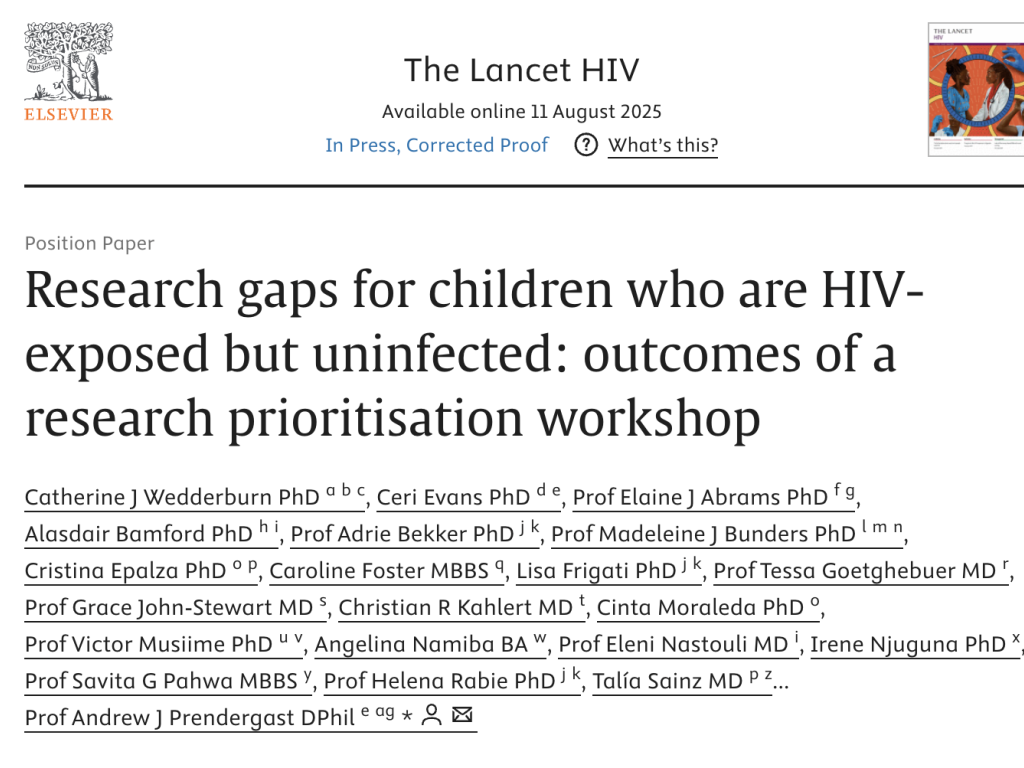NI researcher identifies gaps for children who are HIV-exposed but uninfected

Did you know that globally, 16 million children are HIV-exposed but UNINFECTED, and have health disparities when compared with children who are HIV-unexposed.
A landmark study by Dr Catherine Wedderburn, just published in the journal The Lancet HIV, identified current challenges through a research prioritisation exercise with diverse stakeholders (sponsored by Penta Foundation - Child Health Research), with the aim of identifying the top ten scientific priorities related to children who are HIV-exposed but UNINFECTED (HEU).

To identify current challenges, a research prioritisation exercise was conducted through an online survey and in-person workshop with diverse stakeholders, with the aim of identifying the top ten scientific priorities related to children who are HEU.
Among 104 survey respondents (46% from Africa; 37% from Europe; 15% from the region of the Americas; and 2% from South-East Asia), 271 research questions were submitted. Workshop attendees (n=35) refined and prioritised questions through discussion and consensus. The highest research priority was identifying strategies to reduce morbidity and mortality and to improve growth and neurodevelopment among children who are HEU.
Other research questions included: defining the underlying causes of health disparities; identifying clinically vulnerable mother–infant pairs through screening; documenting life course outcomes; defining the contribution of antiretrovirals to health disparities; identifying clinically important immune perturbations; understanding which infections should be prevented, and how; exploring intergenerational effects; defining meaningful health disparities; and characterising drivers of immune abnormalities.
Participants also identified several methodological considerations and strategic approaches to advance the field. Coordinated action between communities, researchers, clinicians, policy makers, and funders is now required to conduct high-quality research to address these priority needs, with a particular focus on regions with high HIV prevalence.
Read the article here
